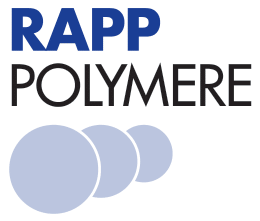HypoGel® 200 SH
€ 43,00*
SP20011015004.0.1G
Product information
HypoGel® is a hydrophilic Gel® type resin which combines high capacities with good solvent compatibility. Glycol spacers with n = 5 or 10 EO units separate the reactive sites from the polystyrene matrix and modify the hydrophobic properties of the polystyrene backbone. Due to the spacer effect the functional group shows a higher mobility which results in higher kinetic rates and high resolution NMR spectra from immobilized compounds on the bead. The resin is compatible to a wide range of solvents and in contrast to polystyrene even polar solvents like methanol or ethanol can be used. These resins show high loading and a hydrophilicity between polystyrene and TentaGel®.
In this resin the glycol spacer contains 5 EO units which separate the reactive sites from the polystyrene matrix.
Literature
L 18 Immunization Overview
- Modrow, S.; Höflacher, B.; Mertz, R.; Wolf, H. Carrier-Bound Synthetic Peptides. J. Immunol. Methods 1989, 118 (1), 1-7. doi: 10.1016/0022-1759(89)90045-8.
- Fischer, P. M.; Comis, A.; Howden, M. E. H. Direct Immunization with Synthetic Peptidyl-Polyamide Resin. J. Immunol. Methods 1989, 118 (1), 119-123. doi: 10.1016/0022-1759(89)90061-6.
- Flegel M., Pichova D., Minarik P., Sheppard R. C. Analogues of Gn-RH stimulating the enhanced production of antibodies. Synthesis and some biological effects of peptides containing adjuvant, lysine-branched, and solubilised polymer support components in Peptides 1990, Proceedings of the 21st European Peptide Symposium (Giralt E., Andreu D., Eds.), ESCOM, Leiden, 1991, 837.
- Kanda, P.; Kennedy, R. C.; Sparrow, J. T. Synthesis of Polyamide Supports for Use in Peptide Synthesis and as Peptide-Resin Conjugates for Antibody Production. Int. J. Pept. Protein Res. 1991, 38 (4), 385-391. doi: 10.1111/j.1399-3011.1991.tb01518.x.
- Kennedy, R. C.; Dreesman, G. R.; Chanh, T. C.; Boswell, R. N.; Allan, J. S.; Lee, T. H.; Essex, M.; Sparrow, J. T.; Ho, D. D.; Kanda, P. Use of a Resin-Bound Synthetic Peptide for Identifying a Neutralizing Antigenic Determinant Associated with the Human Immunodeficiency Virus Envelope. J. Biol. Chem. 1987, 262 (12), 5769-5774. doi: 10.1016/s0021-9258(18)45641-4.
- Zeppezauer, M.; Hoffmann, R.; Schönberger, A.; Rawer, S.; Rapp, W.; Bayer, E. Hydrophilic Polystyrene-Polyoxyethylene Graft Polymer Beads as Carrier of Antigenic Peptides for in Vivo and in Vitro Immunization Techniques: Applications to the Non-Catalytic Zinc Loop of HLADH Isozymes and to Histone Fragments. Z. Naturforsch. B J. Chem. Sci. 1993, 48 (12), 1801-1806. doi: 10.1515/znb-1993-1217.
- Rapp W., Zhang L., Beck-Sickinger A. G., Dares K., Wiesmüller K.-H., Jung G., Bayer E. Comparative study of antibody titers induced by a peptide epitope conjugated with protein, lipopeptide, polyoxyethylene and polyoxyethylene-polystyrene graft copolymer in Peptides 1990, Proceedings of the 21st European Peptide Symposium (Giralt E., Andreu D., Eds.) ESCOM, Leiden, 1991, 849.
- Butz S., Rawer S., Rapp W., Birsner U., Immunization and affinity purification of antibodies using resin-immobilized lysine-branched synthetic peptides, Pept. Res., 1994, 7 (1), 20-23.

